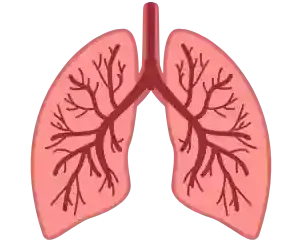Assess your lung capacity and breathing endurance with our specialized Martial Arts Lungs Test. Elevate your performance to new levels!
Disclaimer: Do not use this test if you have breathing problems such as asthma and the flu. Also, if you drink alcohol or smoke in everyday life, please consult a medical professional.
Martial Arts Lungs Test
Test your lungs with this online inspection tool
Hold your breath to measure your lung capacity

Leaderboard
| # | Time (s) |
|---|---|
| 1 | 0.0 |
| 2 | 0.0 |
| 3 | 0.0 |
| 4 | 0.0 |
What is the Martial Arts Lung Test?
The Martial Arts Lung Test is an interactive activity designed to measure your breath control and stamina using a timer. Breath control is a fundamental skill in martial arts, where efficient breathing can enhance performance, endurance, and focus. This test provides a simple way to assess how long you can sustain your breath under timed conditions.
Who can take the Martial Arts Lung Test?
This test is suitable for anyone who wants to explore or improve their breathing techniques. While the test is tailored for martial artists, it is equally beneficial for fitness enthusiasts, athletes, or individuals looking to improve general breath control. It is beginner-friendly and does not require prior martial arts experience.
How does the timer work in the Lung Test?
The timer on the page is designed to help you measure the duration of your breath-holding or control exercise. Start the timer when you begin the activity and stop it once you’ve completed it or need to breathe again. This data provides a clear record of your performance and allows you to track your progress over time.
Is the Martial Arts Lung Test suitable for beginners?
Absolutely! The test is structured in a way that anyone can try it, regardless of their skill level. Beginners can use this as a starting point to understand their breath control capabilities, while more experienced practitioners can challenge themselves to achieve better results.
Do I need any equipment to take the Lung Test?
No equipment is needed for the test. You simply need access to the timer provided on the page and a quiet, comfortable space where you can focus on your breathing.
How can I use the results of the Lung Test?
The results serve as a baseline for your breath control skills. By regularly repeating the test, you can monitor your improvements and understand how different training techniques or practices impact your stamina. This feedback can be invaluable for martial arts training or other physical activities.
Is the Lung Test specific to martial arts training?
While the test is inspired by the needs of martial artists, it is versatile enough to benefit anyone. Breath control is crucial in various disciplines, including yoga, running, and swimming. This test offers a universal way to improve focus and lung capacity.
Can I take the test multiple times?
Yes, there is no limit to how often you can take the test. Repeating the test at regular intervals allows you to measure your progress and set new personal records. It’s a fun and motivating way to challenge yourself.
Are there any risks involved in taking this test?
The Lung Test is a safe and low-intensity activity. However, it’s important to listen to your body. If you feel any discomfort or lightheadedness, stop immediately and rest. Always approach the test in a relaxed and stress-free environment.
How can I improve my lung capacity after taking the test?
Improving lung capacity requires consistent practice. Techniques like diaphragmatic breathing, pranayama (yogic breathing), or specific martial arts breathing drills can be highly effective. Additionally, aerobic exercises such as running, swimming, or cycling can complement your efforts.
Why is breath control important in martial arts?
Breath control in martial arts is a game-changer. It enhances focus, maintains energy, and allows practitioners to execute movements more efficiently. Controlled breathing also reduces stress and improves reaction times during intense situations, making it a vital skill.
Can children take the Martial Arts Lung Test?
Yes, children can take the test, provided they are supervised. The activity is safe and straightforward, but guidance ensures they perform the exercise correctly and safely.
